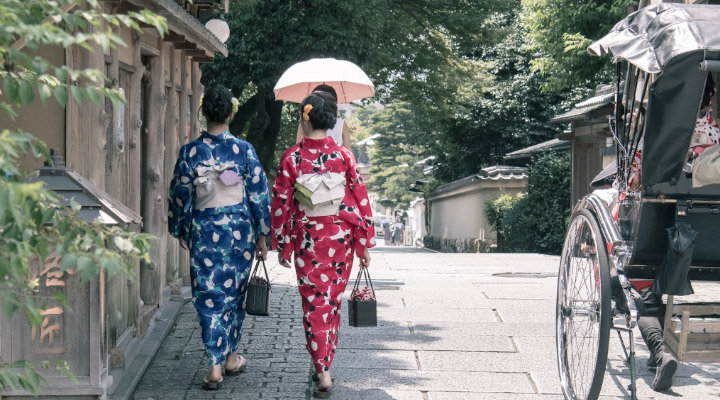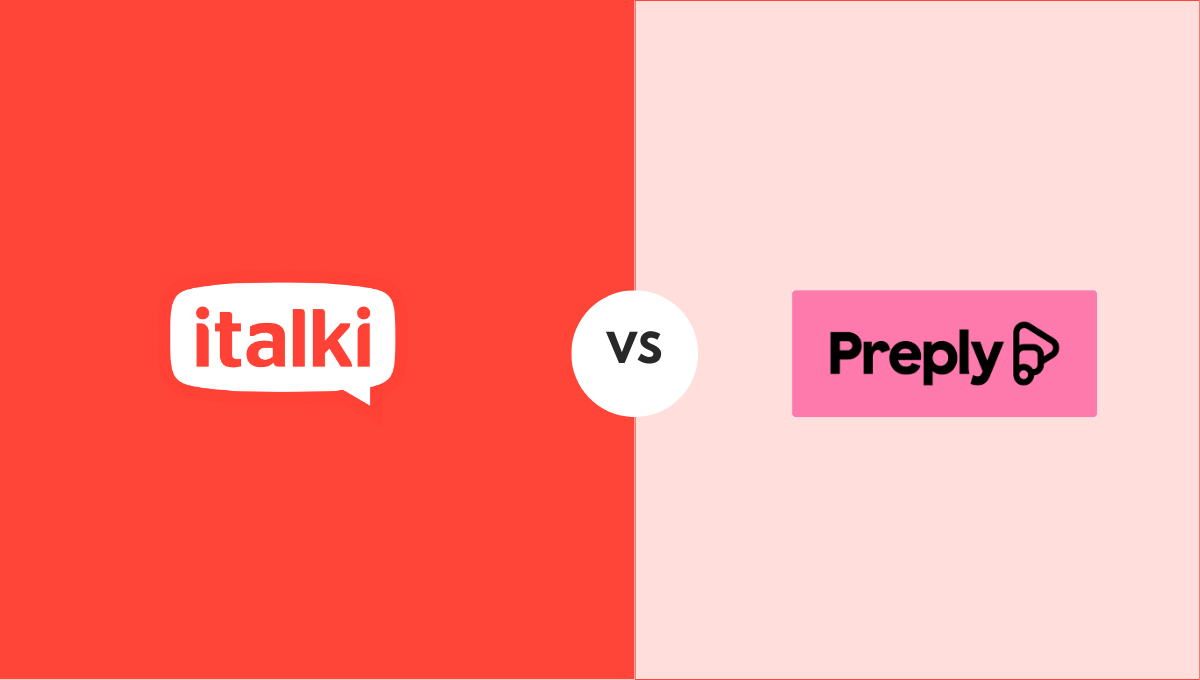Should you learn Korean or Japanese? This is a hard question to answer. For English speakers, both languages are not easy to learn. So which one should you choose?
First, there are a few things you need to consider. For example, what are your motivations and aspirations? What is your goal after learning the language? These questions should be enough to put you on the right path to make a decision about whether you want to learn Korean or Japanese.
But, what if you want to learn both Korean and Japanese? If you try to learn both languages at the same time… you will probably make a mistake. The best thing you can do is master one and then proceed to the next one. This is not something uncommon, as many people who decide to learn Asian languages are interested in learning more than one!
So, which one to learn first: Korean or Japanese? To answer this question, let’s examine both languages and analyze their advantages and disadvantages.
Advantages of Learning Japanese First
If you decide to learn Japanese first, there are pros and cons.
Japanese pronunciation is easier

Japanese pronunciation is much easier than Korean pronunciation. The Japanese language consists mainly of “consonant” and “vowel” usually at the end.
Japanese can be seen as more “simple”
The Japanese language tends to keep it “simple”. Chinese-Japanese characters (known as kanji) are composed of simplified, traditional, and a combination of both. Therefore, their Chinese characters are NOT completely written in traditional Chinese characters.
Another reason why the language can be seen as more simple is conjugation. Japanese conjugation is not as complex as Korean conjugation. To speak intermediate Japanese, you can learn the polite form and the casual form for present/future affirmative, present/future negative, past affirmative, past negative, and te-forms.
With Japanese, you are learning kanji

With Japanese, you are “actively” learning kanji through literacy. Kanji shows the meaning of the vocabulary words you choose. You will be able to distinguish homonyms and discover that a kanji character has an etymology. In addition, it provides clarity through meaning and spacing (in sentences).
Disadvantages of Learning Japanese First
There are also disadvantages if you choose to learn Japanese first. Let’s check them out.
You need to memorize both Hiragana and Katakana
When you learn Japanese, you need to memorize all native Japanese characters (both Hiragana and Katakana). There are 46 basic Hiragana and Katakana, 25 ten and ten marks Hiragana and Katakana, and 33 Yoo-on Hiragana and Katakana, and one Hokugana and Katakana Sokuon. In addition, Katakana has a special Chouon character, but it is easy to remember.
There is no rhyme or pattern to learn them. You need to memorize the 46 basic hiragana and 46 basic katakana, which is 92 characters in total. Once you master all the basic hiragana and katakana, the rest are semi-redundant. Memorizing Hiragana and Katakana does not take a week or two. Unless you have grown up in an Asian country, or you already have experience in learning characters, it will take longer to learn Japanese characters.
Identifying and reading kanji characters
First of all, Japanese kanji have a phono-semantic relationship when it comes to reading and identifying characters. The main drawback is that both phonetic reading and semantic reading apply, which means that the probability of reading the character correctly is NOT entirely certain.
Japanese does not use spaces
An interesting fact is that Japanese language does not use any spaces when writing sentences. You might get a headache just looking at this:
し ょ う が く ご ね ん せ い に し ん き ゅ う し た さ い だ い の メ リ ッ ト は, お と な の つ ご う で ち ゅ う が く せ い と も こ う が く ね ん と も よ ば れ る ち ゅ う ぶ ら り ん の よ ね ん せ い か ら か い ほ う さ れ て, ど っ し り こ う が く ね ん の ざ に こ し を す え ら れ るこ と だ っ た。
The lack of spaces to separate words makes Japanese difficult to learn, especially for beginner speakers.
Advantages of Learning Korean First
Now, let’s go and see what are the advantages and disadvantages of learning the Korean language first.
The Korean writing system is simple

The Korean writing system is simpler than the Japanese. In Korean, there are 14 consonants and 10 vowels. This is a total of 24 basic Korean characters beginner students need to learn. For compound consonants, there are only 5 and 11 compound vowels. Total of 16 compound characters. The grand total is 40 characters, but don’t worry, the compounds are really redundant once you master the basic 24 Korean characters.
The best part is that learning and understanding the Korean writing system doesn’t take more than a couple of months.
Modern Korean doesn’t use many Chinese characters
In modern Korean, Chinese characters are NOT as common as in modern Japanese. Koreans normally do NOT use Chinese characters to write and read the Korean language. While it is true that Koreans use Chinese characters (Hanja), they are not as common and mandatory as in Japanese.
Like Japanese, Korean Hanja is also phono-semantic, but reading and identifying them is easier because only phonetic reading is applied. Therefore, it uses and refers to Chinese-Korean vocabulary, which is about 60% of the language itself. That’s why if you study Japanese Kanji first, you will easily understand Chinese-Korean Hanja.
Compared to how many Chinese characters Kanji and Hanja have, Hanja characters (1,800 in the Korean education system) are fewer than Kanji characters (2,136 in the Japanese education system).
The only drawback is that if you want to learn Hanja, it will only be traditional Chinese characters, whose writing is more complex than simplified and Shinjitai characters.
Korean sentences use spaces
In opposite to Japanese, Korean sentences use spaces to indicate where the marker is.
Korean sentences use spaces to indicate where the marker is. Below is an example of a Korean sentence. Even if you don’t speak Korean, you can clearly see the different words in the sentence.
외모 가 뛰어난 학생들 이 그렇지 않은 학생들 보다 학업 성적 이 뛰어난 것으로 밝혀 졌다고 10 일 선데이 타임스, 데일리 메일 등 의 언론 이 이탈리아 연구팀 의 연구 결과 를 인용 보도 했다.
Disadvantages of Learning Korean First
Let’s see the disadvantages of learning the Korean language before Japanese.
Korean Pronunciation is more difficult
It is often said that Japanese and Korean are very similar languages. Now, this is true to some extent. We should mention that Japanese and Korean have completely different writing systems and, more importantly, the phonetics that go with them are also quite different.
Except for the /z/ consonant sounds (which Koreans generally cannot pronounce), the sounds in the Korean language are a superset of the sounds in Japanese. This means that to learn Korean, you not only have to learn most of the sounds in Japanese but also additional sounds.
The sound and phonetics could be the strongest argument that Korean is the more difficult language to learn. You may have noticed that every time a complete beginner wants to say a Korean phrase learned from a friend, they need to have it repeated about 5 or 6 times before it is understandable and before they can say it properly. And even then, it’s an educated guess at best.
In Japanese, even if you sound like an amateur without the right tones, you can still make yourself understood even with the worst accents (most of the time).
Korean has a complex conjugation
Korean usages are indicative of both past and non-past. Like Japanese conjugation, Korean conjugation sentence end forms have four different forms: formal not polite, informal not polite, informal polite, and formally polite. This makes conjugation so complicated.
Due to the lack of Chinese characters, Korean has problems with homonyms
This can be a nightmare for many Korean learners but when learning Korean you have to be very cautious about what you say, read and/or write. Every time you engage in a conversation in Korean, there is so much confusion through pronunciation and homonyms.

Find Your Perfect Teacher
At italki, you can find your Korean tutor from all qualified and experienced teachers. Now experience the excellent language learning journey!
Book a trial lesson
For example, sorry, apple and lesson 4 have the same character: 사과 / sa gwa. This is the reason why some Koreans say sorry with an apple.
To differentiate this, learning Hanja is a must:
- 사과 ( 沙果 ) / sa gwa / means “apple”.
- 사과 ( 謝過 ) / sa gwa / means “apologize.”
- 과 ( 四 課 ) / sa gwa / means “Lesson 4.”
Should I learn Korean or Japanese: the verdict
Because Korean Hanja is NOT “active” and mandatory for anyone who wants to learn, it is better to learn kanji from Japanese, so you will not only understand the concept of kanji but also easily master the characters and their meanings. Once you have mastered basic or intermediate Japanese, learn Korean. Korean has all Japanese vowels and similar pronunciations. And if you understand the concept of kanji (especially traditional Chinese characters), learning Japanese or Korean will sharpen and improve your Chinese.
Regardless of which language you choose first, working with a Japanese tutor or Korean specialist will provide the structured guidance needed to understand these complex writing systems with confidence.
If you have made a final decision and want to learn Korean, on italki you will find some of the best Korean teachers online. On the other hand, if you prefer to give the Japanese language a chance, you will also find an array of Japanese teachers to choose from.
Book a trial lesson and see how you can learn these interesting Asian languages online, from the comfort of your home.
Want to learn a language at italki?
Here are the best resources for you!



















